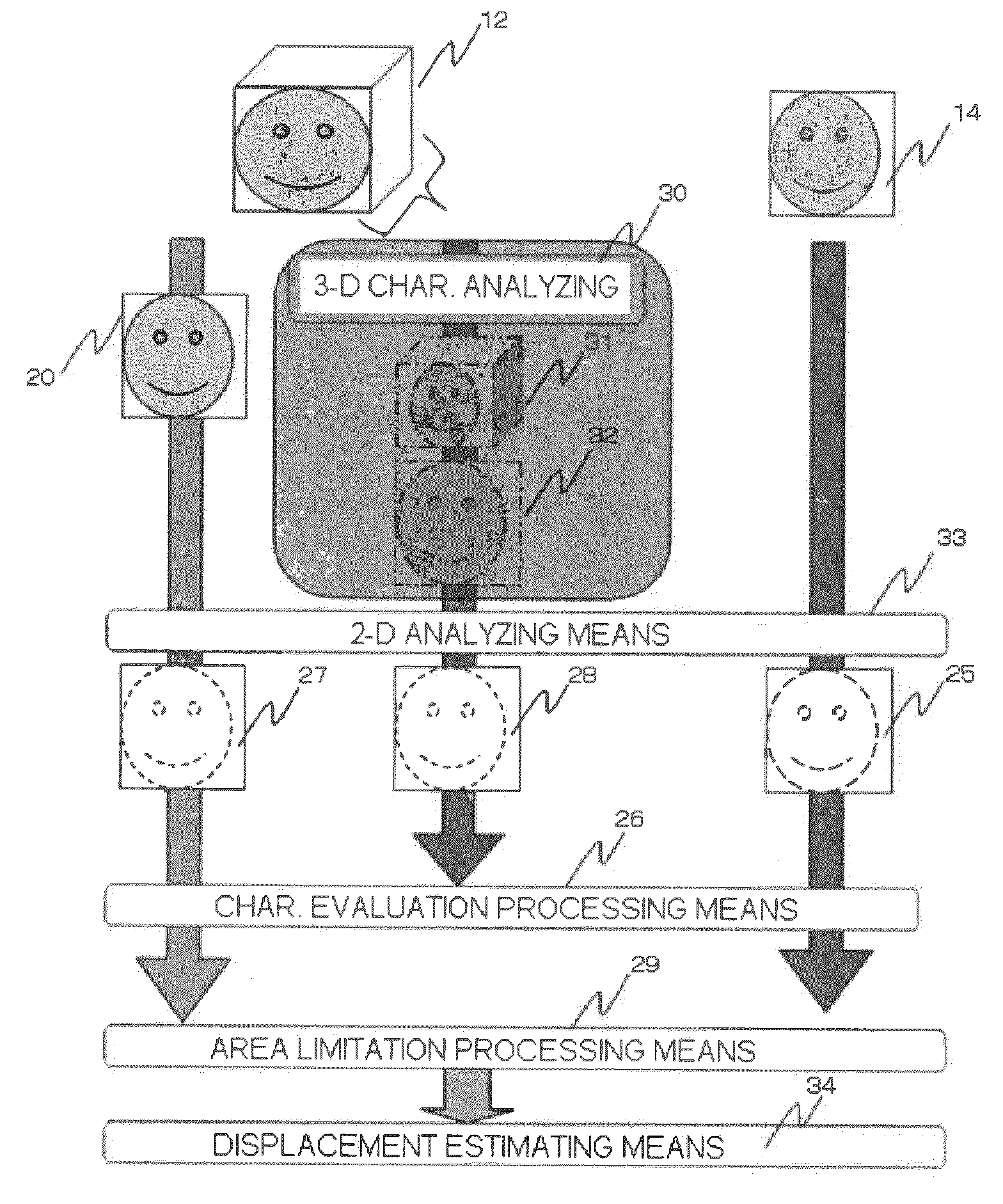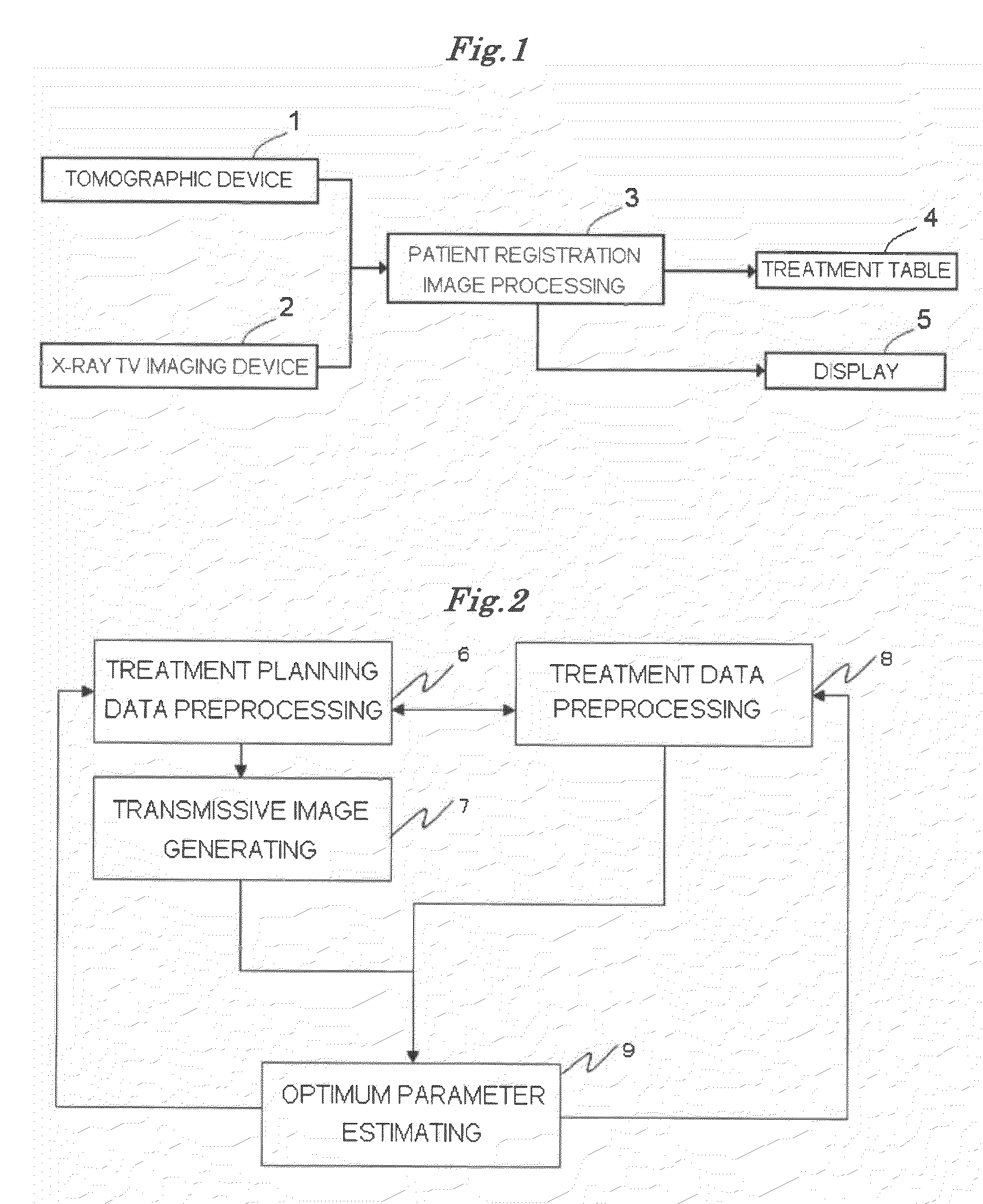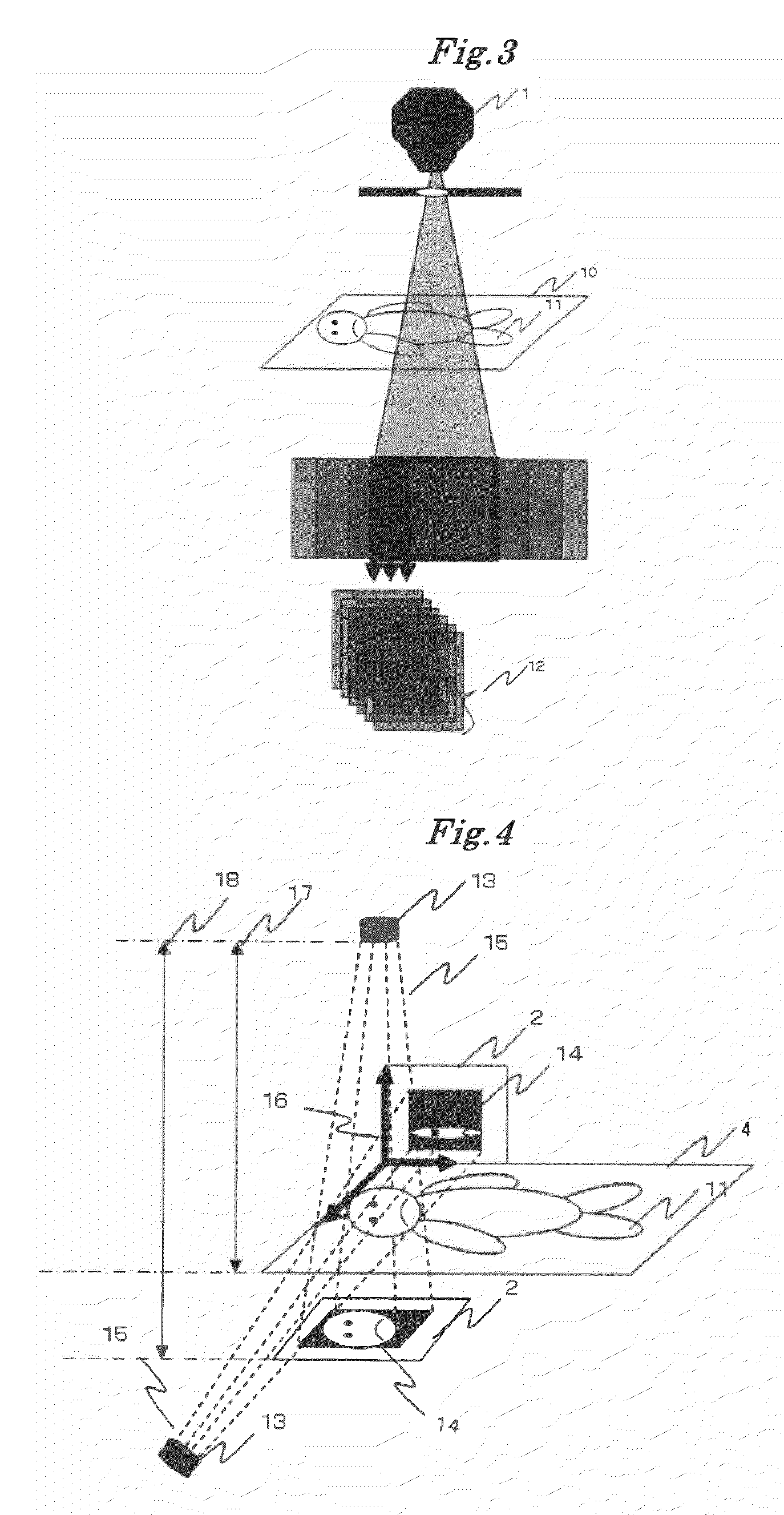Patient registration system
a registration system and patient technology, applied in the field of patient registration system, can solve the problems of invasiveness to the body, displacement of body markers, and inability to embed markers in the body of patients, and achieve the effect of high accuracy and short tim
- Summary
- Abstract
- Description
- Claims
- Application Information
AI Technical Summary
Benefits of technology
Problems solved by technology
Method used
Image
Examples
embodiment 1
[0074]FIG. 1 shows a configurational view illustrating a patient registration system according to a first embodiment of the present invention. The patient registration system is configured of a tomographic device 1, an X-ray television imaging device 2, a patient registration image processing device 3, a treatment table 4, a display device 5, and an input device (not shown) such as keyboard, mouse and the like.
[0075]The tomographic device 1 is configured of, for example, an X-ray CT (Computed Tomography) scanner, and serves a function of capturing 3-D (three-dimensional) CT data of a diseased site. The X-ray television imaging device 2 is configured of, for example, an X-ray image intensifier tube, and serves a function of capturing an X-ray television image of the diseased site. The X-ray television imaging device 2 is usually installed integrally with a radiotherapy equipment.
[0076]The patient registration image processing device 3 can be configured of one or more computers and th...
embodiment 2
[0099]In this embodiment, in the process flow shown in FIG. 6 of Embodiment 1, the data is compressed to calculate the amount of displacement. This processing compresses the data without damaging the three-dimensional characteristic of the CT data 12. Then, registration is carried out using the compressed data. For this method of compression without damaging the three-dimensional characteristic, the three-dimensional characteristic analyzing means 30 is used.
[0100]This method is carried out, as described in Patent Publication 4, by expanding the processing of the two-dimensional image as shown in FIG. 7 to the three-dimensional volume data as shown in FIG. 8. First, the whole CT data 12 is divided into blocks, and then compressed using high resolution volume data 39 and low resolution volume data 40 that are areas before and after compressing the divided area, without damaging the three-dimensional characteristic. Alternatively, the CT data 12 may be compressed without carrying out ...
embodiment 3
[0105]In this embodiment, in the process flow shown in FIG. 6 of Embodiment 1, the displacement estimation is carried out using only the characteristic amount obtained by the characteristic evaluation processing means 26, without using the three-dimensional characteristic analyzing means 30, the characteristic evaluation processing means 26, and the area limitation processing means 29. After convergence, the amount of displacement is varied as the parameter for out-of-plane rotation.
[0106]The parameter is varied by the following method. In a generation method here, the parameters are varied at random (Mersenne twister or the like). Alternatively, the parameters are varied by changing a varying range of parameter at an arbitrary step such as (+5 degrees to −5 degrees) with respect to an out-of-plane rotation axis. In this case, limiting values of the varying range is maximum values of movement of the treatment table corresponding to the out-of-plane rotation. Alternatively, the param...
PUM
 Login to View More
Login to View More Abstract
Description
Claims
Application Information
 Login to View More
Login to View More - R&D
- Intellectual Property
- Life Sciences
- Materials
- Tech Scout
- Unparalleled Data Quality
- Higher Quality Content
- 60% Fewer Hallucinations
Browse by: Latest US Patents, China's latest patents, Technical Efficacy Thesaurus, Application Domain, Technology Topic, Popular Technical Reports.
© 2025 PatSnap. All rights reserved.Legal|Privacy policy|Modern Slavery Act Transparency Statement|Sitemap|About US| Contact US: help@patsnap.com



